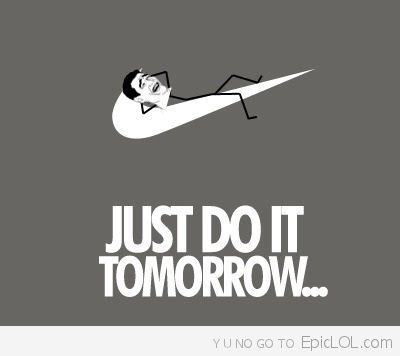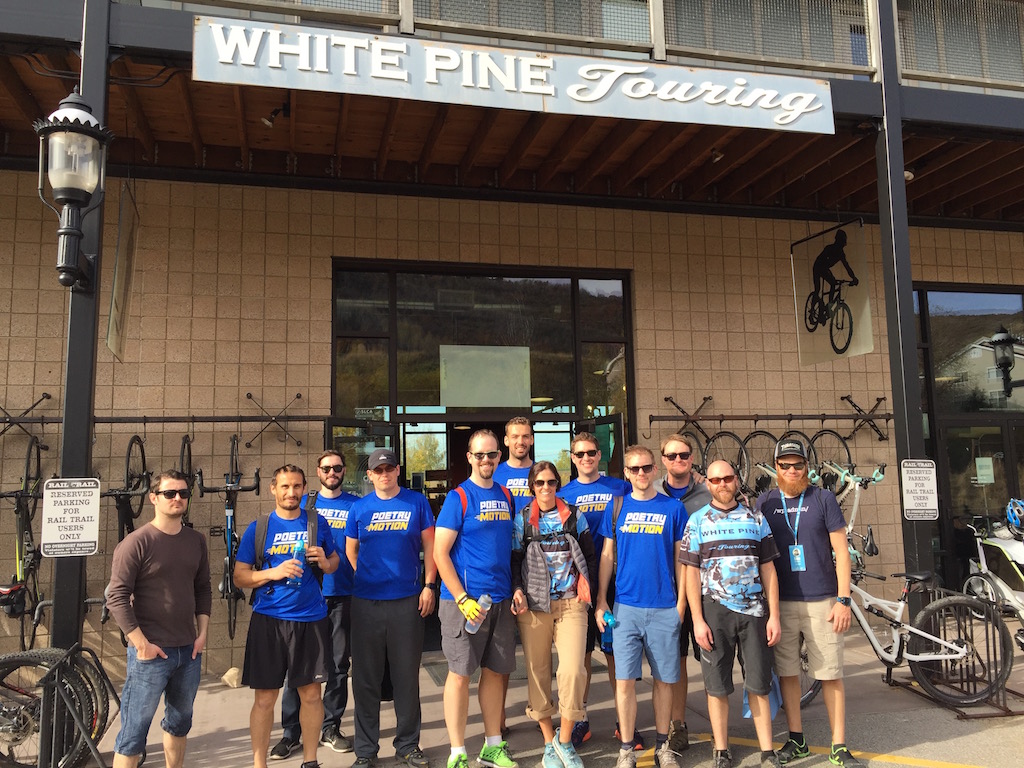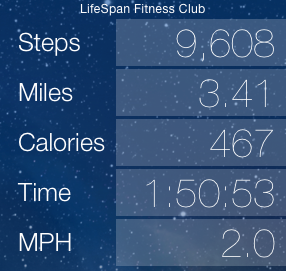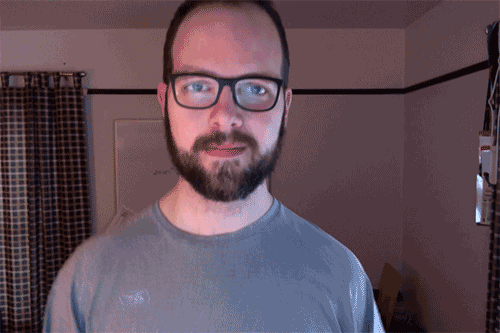Before Working Remote
In July 2013 I started working remote at Automattic working on the WordPress for iOS app. I was pretty happy with my life at that time and the transition to the new job was not for reasons of disliking my previous job. In fact I loved working for Red Arrow Labs in Milwaukee and it was incredibly hard leaving them. I only left Red Arrow because it felt like Automattic was my unicorn of jobs and I had stumbled upon it by sheer luck. It turns out that I really wasn’t entirely happy with how things were going in my life at the time even though the job was great.
I don’t believe single data points like body weight can gauge happiness. It is, however, an indicator of my overall health and satisfaction with my daily life. In 2010 I had dropped to 235lb/106kg without much effort except eliminating bad foods and walking around the neighborhood a lot. Life changed a bit and within three years I was back up to the 280lb/127kg range.
I was admitted to the ER in 2011 when my heart rhythm freaked me out. I was diagnosed with Atrial Fibrillation (aFib) which is when the electrical signals around your heart freak out. The major risk associated with aFib is stroke because while your heart is beating all weird blood has the chance to pool causing a clot to form. I ended up being put on two medications and regular checkups with an electrophysiologist. Something had to change.
Weight Loss Failures
I’ve learned over time that major self change only is successful when done in super small increments. Drastic short term changes, while satisfying to the impulse buyers in us, end up failing for myself because I miss the old way. Riding my new bike to work was a great success for me and made me feel really good – but it took a lot of effort. Instead of continuing with the biking to work I dissuaded myself by convincing myself it was too cold, or I had an early meeting and couldn’t be sweaty, or my knees hurt a little. Turns out I was doing too much too fast.
I didn’t really find out how to let myself be successful until I left my office job and starting working remote at Automattic. Almost immediately I realized I really did have Attention Deficit Disorder (ADD) and couldn’t ignore it any longer. My level of success as an Automattician depended on me being able to focus and alter my environment to remove distractions. I immediately changed everything in my office and set up all these tools like using the Pomodoro Technique, notebooks, standing at my desk. I felt super successful at first but in the end none of these techniques helped because I got overwhelmed.
In October 2013 I realized I needed help. I ended up seeing a counselor who specializes in both substance abuse and ADD. She helped me work through some of the issues I was having with my attention and got me to realize how I was able to succeed in the past and why I was failing now. The nature of working in an office with the multitude of distractions worked in favor of the ADD. Removing those distractions made me entirely in charge of my workday and my brain spun out of control. For around four months I was on Vyvannse to help let me see how my brain could operate with the focus I was looking for. Ultimately I took myself off of the meds because of some behavioral changes that were too drastic of a change. What I discovered pretty quickly though is a daily regimen breaking things up into chunks made a big difference in my ability to do work.
Combating the Change Aversion
I started biking again mid 2012 after buying my first “real” bicycle made by Trek. I had no excuses any longer to biking – I finally had the comfortable seat, full range of gears, and a proper fit. I recorded all of my trips in RunKeeper for future analysis (like this post). I wanted to go for longer bike rides but excuses like being sweaty or its a bit chilly got in my way.
I started working out over my “lunch hour” to help break up the day. Your brain chemistry changes during exercise and I discovered it helped reset my thoughts. I found a bunch of great step aerobics videos on YouTube from Jenny Ford. A small investment in a step bench allowed me to work out right in my office with a minimal mental barrier. I can shower after I’m done and there is zero commute to the gym. Over time I went from one day a week to around three days.
As time has progressed I’ve mixed in riding my bicycle almost every day during the summer for an hour (roughly 15 miles) with exercising in my basement. On bad weather days I stick with the routine because I now consider exercise just a regular part of my day. I don’t need to overdo it to get benefits from it. For the last year I’ve been also using a treadmill under my desk walking on average of 6-10 miles a day. I absolutely love walking and working especially in the morning.
All of these changes to my exercise regimen happened super gradually. Any time I started something new I would come in at the ground level with no expectations of success. If I didn’t like something, I stopped doing it. There was no need to try to fool myself with doing something like just because it burned a lot of calories.
Automattic
Working remote is a big part of my success but the other part is specific to Automattic. A subset of us have banded together to encourage fitness routines and providing support when things go wrong. We have a Slack chat room dedicated to fitness that is full of awesome praise and discussions. RunKeeper friends from work also provide that boost of support when we have that tiny success finishing a workout. At our grand meetups every year we also encourage physical activities to connect us together doing something active and fun. Automattic even recently bought everyone a Fitbit device of their liking to let us be aware of our activity levels.
Before working at Automattic I always thought of fitness as a specific set of things – things like P90X and powdered drinks/supplements, talking about your current weight lifting levels and competition meant to boast not encourage. Turns out none of that is the truth here. We have a bunch of people doing weight lifting, Crossfit, and running but its all ego-free. We all have our own approach to fitness and no judgement is passed only encouragement. It’s super awesome.
Where I’m at Today
My weight has dropped to around 225lb/102kg and remained relatively plateaued over the past year. Recently I’ve mixed in weight/resistance every other day which I am really enjoying. My goal isn’t weight loss but rather increasing my focus with the side effect of increased stamina to do the fun things like biking or walking. With the weight loss and greatly improved active lifestyle I’ve been able to stop the aFib medications and just have biannual checkups with my electrophysiologist.
Having both the flexibility of working remote and the support of my coworkers going through similar challenges has helped a lot. I am a better person for combating the physical health issues and establishing a framework to counteract the ADD. While I don’t believe I’d really be dead today if I had continued on the path of the unchecked body weight, I do know I am healthier and much happier.











